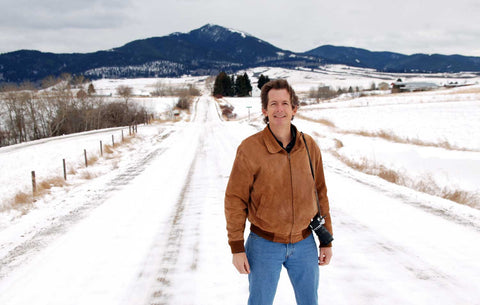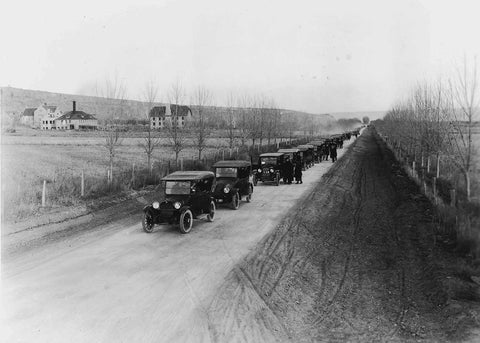Then and Now: Montana's changing road trips
Road trip photos reveal two sides of Montana
A 15,000-mile road trip revealed that Montana is becoming two very different places, says a Montana State University geography professor.

By Evelyn Boswell, MSU News Service
BOZEMAN -- A 15,000-mile road trip revealed that Montana is becoming two very different places.
Bill Wyckoff wanted to see how Montana's landscape was changing and understand the processes involved, so he drove around the state during the summers of 2001 through 2004 photographing scenes that were first photographed during the 1920s and '30s. Staff with the Montana Department of Highways took the original photos to show how Montana's roads and bridges looked before and after receiving federal funds.
Wyckoff's photos, the originals that inspired them and accompanying essays are part of a new book titled, "On the Road Again: Montana's Changing Landscape." Written by Wyckoff and published by the University of Washington Press, the book is one in a series of Weyerhaeuser Environmental Books that explore human relationships with natural environments.
His travels underlined how parts of Montana are struggling with too much growth while other areas are coping with loss, Wyckoff said in a recent interview. The Gallatin Valley and Flathead Valley, for example, are growing rapidly, while Eastern Montana and certain areas of Western Montana are losing one family at a time, one student at time.
He's no politician or planner, Wyckoff said. He's not even a professional photographer. But he is a historical geographer in MSU's earth sciences department and saw that some places changed very little over 80 years. Other changes occurred unpredictably and quickly.
"We need to be humble, and we need to be careful," he noted. "If we are not, we will lose our biggest asset -- our big sky, Big Sky Country."

Cars emerge from downtown Billings as Polytechnic Drive is open to travel in 1921. (Photo courtesy of Bill Wyckoff and Montana Historical Society).

Billings' Polytechnic Drive as photographed in 2002. (Photo by Bill Wyckoff).
Wyckoff started his project by looking through box after box of photographs in the Montana Historical Society's Photograph Archives in Helena. Lory Morrow, the photograph archives manager, said Wyckoff looked at a collection of photographs that was given to the society by the Montana Department of Highways, now known as the Montana Department of Transportation. The images were taken from the 1920s to the 1980s.
It's unusual, Morrow said, for someone to search through an entire collection instead of looking for just one or two photographs to illustrate a magazine article or book.
"The exception is someone coming in and looking at an entire collection like he did," she said, referring to Wyckoff. "It's something we really like and wish more researchers would do."
Wyckoff said he chose about 70 photos that showed more than roads and bridge abutments. Then he took off in his 1985 Toyota Tercel to see how those scenes look today. He wanted to photograph the sites with black-and-white film exactly where they were shot originally and at the same time of day.
"So many of the photos show little change," Wyckoff said later. "Other photos are so different it's hard to see they are in the same place."
Finding exact locations wasn't always easy since he had no notes from the original photographers, Wyckoff said. When he couldn't find a spot, he showed the old photos to local residents who often knew exactly where he needed to go. Sometimes when thunder storms, road construction or other factors interfered, he returned several times to one spot.
He generally traveled in the summer and was gone five to seven days at a time, Wyckoff said. His project took him to the top of cliffs and to paths known previously as the Theodore Roosevelt International Highway or Yellowstone Trail. Many times, he ended up standing in the middle of a street in the center of town.
"I'm a runner, so I depended on being able to run quickly," he said.
Crisscrossing Montana, usually alone, made him ponder the challenge and chore it was for people to drive across Montana in the 1920s, Wyckoff said. "When you think of poking across Montana at 20 mph, how daunting that must have been."
If someone repeats his efforts in 80 years, Wyckoff said he hopes, "that we will see a record of responsible stewardship, of thoughtful planning. Hopefully, some of these places will look similar to now."



